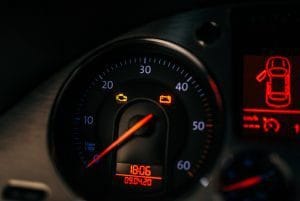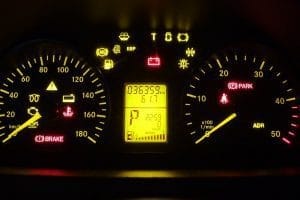Overhead Camshaft is an arrangement in which the camshaft is mounted in the cylinder head above the combustion chamber/engine block, and the valves are operated directly using the camshaft without any pushrod arrangement.
The Overhead camshaft uses a toothed shape belt or chain connected to the crankshaft for its operation.
There are generally two types of Overhead Camshaft (OHC)
- Single overhead camshaft (SOHC)
- Dual overhead camshaft (DOHC)
Difference between Dual and Single Overhead Camshaft

Advantages of using the Overhead Camshaft (OHC)
- The OHC is light in weight and it requires fewer parts to operate. As on high rpm like 2200 rpm the valve has to open more than 20 times in 1 second so in that case, the weight of the valve train plays a major role.
- The major advantage of using an OHC is that there is a greater ability to customize the size, shape, and location of intake and exhaust ports as there is no pushrod to hinder in between the arrangement.
- This improves the gas flow through the engine, increasing power output and fuel efficiency.
What is Dual Overhead Camshaft (DOHC)
- In (DOHC or “twin-cam”) engine two camshafts are used, where one camshaft operates all the intake valves and the other operates all the exhaust valves.
- So, for a single inline engine, two camshafts are used and for a V-shaped engine, four camshafts are used, two on either side of the cylinder.
- Generally in DOHC arrangement, a four-valve setup is used for each cylinder, where two valves for inlet and two for exhaust.
- Some models that use DOHC arrangements are the Alfa Romeo Twin Cam engine, the Jaguar XK6 engine, the early Ford I4 DOHC engine.
- A Bucket type tappet is used to operate the valves directly.
- The DOHC arrangement allows us to maintain a wider angle between the intake and exhaust valves.
What is Single Overhead Camshaft (SOHC)

- In (SOHC or “single-cam”) engine a single camshaft is used to operate both intake and exhaust valves
- Generally in SOHC two-valve arrangement is used for each cylinder where one valve is for intake and another for exhaust (the size of valves are generally larger in SOHC arrangement than in DOHC arrangement)
- However, some engines, such as the 1998 Triumph Dolomite Sprint engine and Honda J Series V6 Engine uses four valves per cylinder. This was achieved by placing the camshaft in the center of the cylinder head, with equal length of rocker arms actuating the intake and exhaust valve.
- They operate the intake and exhaust valves indirectly with the help of a rocker arm attached to a solid rod.
- It was the conventional configuration of the overhead camshaft.
Components of Overhead Camshaft drive system
1- Rocker Arm
A rocker arm is an oscillating lever that transfers radial movement from the camshaft lobe into linear movement at the inlet and exhaust valve to open it.
2- Tappet
A tappet is a component that is used to transfer motion of camshaft to operate inlet and exhaust valves by converting the rotary motion of cam to linear motion.
3- Cam journals
Cam journals are made up of steel they act as camshaft support for its rotation where a small layer of lubrication is formed between cam tightening caps and cam journal due to the hydrostatic lubrication system, which helps in the proper seamless motion of the camshaft.
4- Camshaft Lobe
The Cam lobe is the most essential part of the camshaft which operates tappets/Cam followers and transfers motion to the rocker arms attached to the valve springs with the help of pushrods.
5- Fuel pump lobe
It is a circular lobe which is used to operate a fuel pump with the help of a belt and pulley system.
6- Cam timing gear and locknut
Cam timing gear/pulley transfers the power from crank gear to the camshaft, the gear/pulley is attached to the rear side of the camshaft along with the locking nut which helps to keep the gear at its original position.





